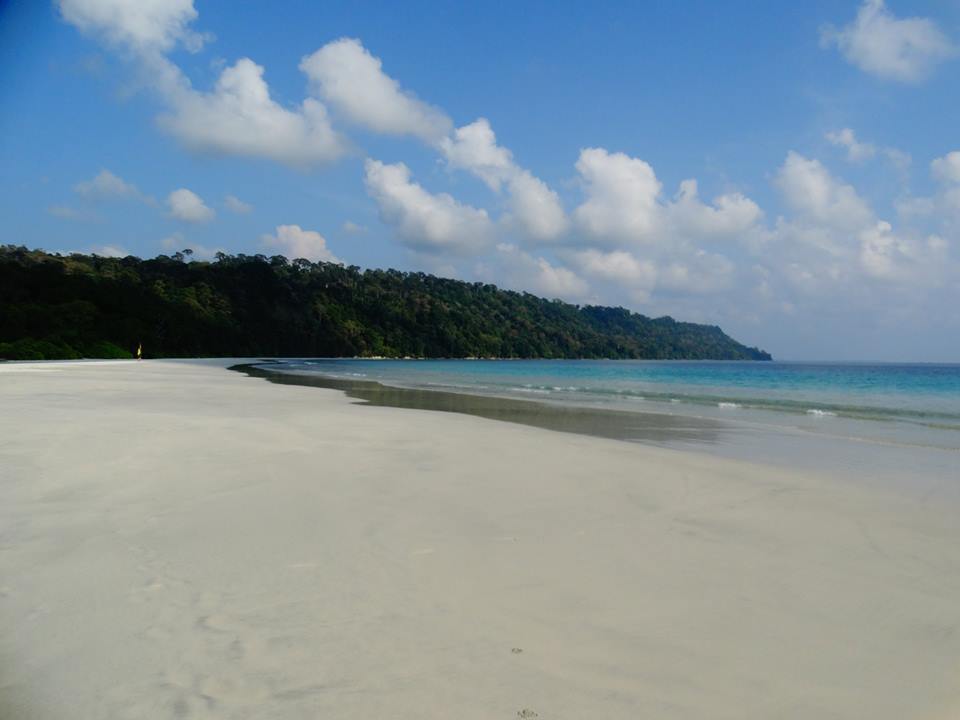
Touches of the Andamans.
We flew 13 km from Kolkata to Port Blair, the capital of Andaman and Nicobar Islands. For about half an hour from the sky I see the confluence of the sea and the mountains, the Bay of Bengal on all four sides of the Andamans, the Andaman Sea and the Indian Ocean. The only international airport in Andaman and Nicobar Islands – Bir Savarkar Airport, small but tidy. It is worth mentioning that all foreigners have to take special permission (RAP-Restricted Area Permission) to enter the Andamans, which can be obtained by filling the form at the specified counter in a very short time.
After checking in at the hotel from the airport and having lunch, we left for the Cellular Jail which is one of the attractions of our trip. Known as Kalapani, a ruthless witness to the British rule, this cellular prison was built in the long ten (1896-1906) years with thousands of exiled prisoners. Built in the shape of a bicycle wheel, the seven wings have a total of 698 cells, watch towers, condom cells, gallows and accessories. Every day (excluding government closures) the full details of this Unesco Heritage are presented through evening light and sound shows in its open courtyard. This commentary reveals the lives of political prisoners, the liberation struggle and the cruelty of the British rulers. It is pertinent to mention here that most of the list of political prisoners held in these jails are people from different districts of East Bengal at that time which proves our leading role in the anti-British movement.
The next morning we went to Ross Island where we got an idea of the luxurious life of the British officers and their families involved in the management of this prison. Ross is a small island that can be reached in just ten minutes by motorboat. The island was then known as the Paris of the East for its natural beauty and improved quality of life, with still visible swimming pools, water refineries, diesel generators, printing presses, galleries, churches and bakeries. , Much can be understood by looking at the open stage and club.
After a two-night, three-day history ghataghati, this time we set off in search of unadulterated nature in the Andaman Sea island of Havelak. The 60-kilometer sea voyage is just a two-hour ride on a modern cruise ship. The long jetty route from the ship is full of wonders – below is clear water and countless fish fairs of color Berang in white sand. To save time here too, check in at the hotel and have lunch again and after an hour-long taxi journey, Radhanagar Beach-Time Magazine is the best in Asia. Really worth seeing – blue water, white sand and dense forest. The next morning the destination is Elephant Beach, where the occasional elephant is spotted at Anindasundara Beach. Seeing elephants at the last minute with various water sports completes our journey.
At the end of the two-night Havelock trip, the ship again sailed to Nile Island – this time in 45 minutes. The island is famous for its live corals – a lifelong memory of live corals and fish hiding in clear water in just two hours on a glass bottom boat. The island also has the Coral Bridge, locally known as the Howrah Bridge. Andaman and Nicobar Islands with about six hundred islands, of which only 25/26 are inhabited by people (including indigenous people). We have only been able to see four of his islands on a five-night, six-day trip. Most of the island’s nearly four lakh indigenous people are Bengali-speaking – whose ancestors are from the then East Bengal (especially the southern region). I have heard that everyone from Bangladesh has invited me to go to their house, talked about Bangladesh in the memory of the elder members of the family and wanted to know about the progress of our country. The people here are very hospitable, there are a lot of hotels, the food is just like in Bangladesh – so Andaman can be a witness to our natural beauty and our political history.